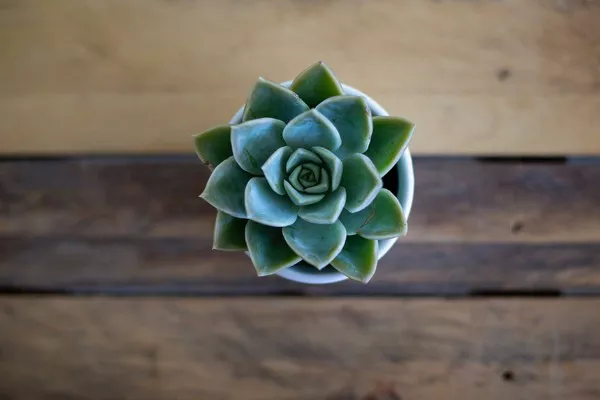Succulents, with their captivating array of shapes, colors, and sizes, have become a beloved addition to indoor and outdoor spaces alike. Their ability to thrive in various environments while maintaining their unique aesthetic appeal has made them a favorite among plant enthusiasts. While many succulents are known for their compact size, there’s often curiosity surrounding just how big these small plants can grow. In this article, we delve into the fascinating world of small succulents and explore the factors that influence their growth patterns.
Understanding Succulent Growth
Before diving into the specifics of succulent growth, it’s essential to grasp the fundamental characteristics of these plants. Succulents belong to a diverse group of plant species characterized by their ability to store water in specialized tissues, such as their leaves, stems, or roots. This adaptation allows them to survive in arid or semi-arid conditions where water is scarce.
One of the defining features of succulents is their ability to grow in compact forms, making them ideal for arrangements in small pots or terrariums. However, the size to which a succulent can grow depends on several factors, including species, environmental conditions, and cultivation practices.
Factors Influencing Succulent Growth
1. Species Variability: Succulents encompass a wide range of species, each with its own growth habits and characteristics. Some species, such as Haworthia and Lithops, naturally maintain a compact size, rarely exceeding a few inches in height or width. On the other hand, species like Agave and Aloe can grow significantly larger, with some reaching several feet in height and diameter.
2. Environmental Conditions: The environment plays a crucial role in determining the growth potential of succulents. Factors such as light, temperature, humidity, and soil composition can all influence their growth patterns. For instance, succulents grown in bright, indirect light tend to develop compact, sturdy growth, while those subjected to low light may stretch or become leggy in their search for sunlight.
3. Watering and Drainage: Proper watering practices are essential for maintaining healthy succulents and controlling their growth. Overwatering can lead to root rot and other issues, while underwatering may stunt growth or cause dehydration. Additionally, well-draining soil is critical for preventing waterlogged conditions that can inhibit root development and limit growth.
4. Container Size and Root Space: The size of the container in which a succulent is planted can also impact its growth potential. Small pots may restrict root growth and limit the overall size of the plant, while larger containers provide more room for roots to spread and support larger growth. However, it’s essential to strike a balance, as excessively large pots can hold excess moisture and increase the risk of overwatering.
Common Small Succulent Varieties and Their Growth Habits
While the size of succulents can vary widely depending on species and cultivation conditions, some varieties are known for their compact growth habits. Here are a few popular small succulents and insights into their typical size ranges:
1. Echeveria: Echeverias are prized for their rosette-shaped foliage and come in various sizes, from miniature to large. Miniature echeverias typically reach sizes of 2 to 4 inches in diameter, making them ideal for small containers or arrangements.
2. Sedum: Sedums, also known as stonecrops, encompass a diverse group of succulent species with varying growth habits. Many sedum varieties, such as Sedum rubrotinctum (Jelly Bean Plant), stay relatively small, reaching heights of 6 to 8 inches.
3. Crassula: Crassulas, including popular varieties like Crassula ovata (Jade Plant), exhibit a range of growth habits, from compact to tree-like. Smaller crassula species, such as Crassula perforata (String of Buttons), typically stay under 6 inches in height, making them suitable for small containers or hanging baskets.
4. Haworthia: Haworthias are known for their striking architectural shapes and compact growth habits. Species like Haworthia cooperi and Haworthia attenuata generally remain small, with individual rosettes ranging from 2 to 6 inches in diameter.
5. Sempervivum: Commonly known as hens and chicks, Sempervivums form tight clusters of rosettes and thrive in rocky or gravelly soils. While individual rosettes are small, usually measuring 1 to 2 inches in diameter, they can multiply rapidly, creating dense mats of foliage.
Cultivation Tips for Controlling Succulent Growth
For those looking to maintain the compact size of their small succulents or control their growth, here are some cultivation tips to consider:
1. Light Management: Providing adequate light is crucial for healthy succulent growth, but excessive sunlight can cause stress and elongation. Place succulents in bright, indirect light to promote compact growth and prevent stretching.
2. Pruning and Propagation: Regular pruning can help maintain the desired size and shape of succulents. Remove any leggy or overgrown stems to encourage bushier growth. Additionally, propagating succulents through offsets or leaf cuttings allows you to start fresh with smaller plants.
3. Container Selection: Choose appropriately sized containers that allow for adequate root space while preventing overcrowding. Consider repotting succulents into slightly larger containers as they grow to accommodate their increasing root mass.
4. Watering Schedule: Adjust your watering frequency based on environmental conditions and the specific needs of each succulent. Water thoroughly but allow the soil to dry out between waterings to prevent overwatering and encourage healthy root growth.
5. Temperature and Humidity: Maintain consistent temperature and humidity levels to support optimal growth. Avoid extreme temperature fluctuations and provide adequate ventilation to prevent moisture buildup, which can lead to fungal problems.
Conclusion
While small succulents are prized for their compact size and ornamental value, their growth potential is influenced by various factors, including species, environmental conditions, and cultivation practices. By understanding these factors and implementing appropriate care strategies, you can effectively manage the size of your succulents and create stunning displays tailored to your preferences. Whether you prefer petite rosettes or larger specimens, there’s a diverse array of small succulents to suit every taste and space requirement.


